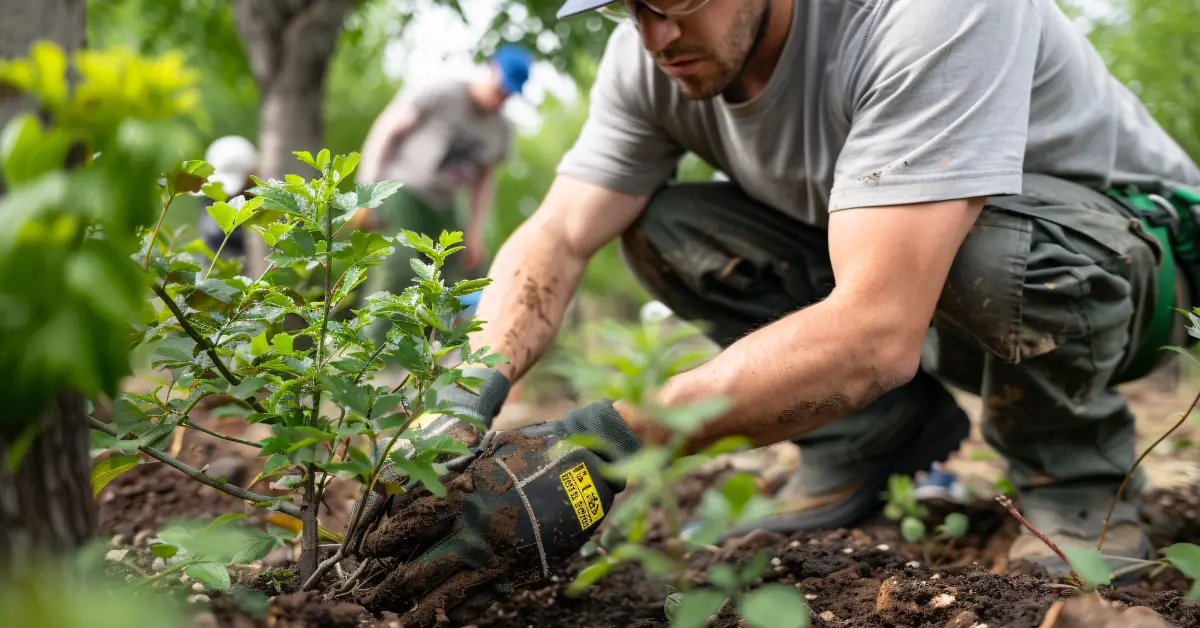Blockchain technology is transforming wildlife conservation by enhancing transparency in tracking funds, monitoring animal movements, and securing biodiversity data. Initiatives like Ocean Eye and InvestConservation use blockchain to direct funds to local communities and protect ecosystems, while blockchain-based tracking helps combat poaching by providing tamper-proof records. This innovative approach fosters trust, accountability, and a stronger, tech-driven future for global conservation efforts
Imagine taking a walk through a forest and knowing that each tree, animal, and the very soil beneath your feet is protected by a network as secure as the digital banks we trust with our money. This is what blockchain is doing for conservation today, transforming the way we safeguard ecosystems worldwide.
The Conservation Challenge
Wildlife conservation has always struggled with transparency. How can people and organizations ensure that every dollar donated to conservation efforts is making a real impact? How do we track protected species or endangered habitats without enormous manpower? This is where blockchain steps in.
How Blockchain Works in Conservation
Blockchain, known for its role in cryptocurrencies like Bitcoin, is a digital ledger system that records transactions in a way that’s nearly impossible to alter. For conservation, this translates to an incredibly reliable way to track and monitor everything from anti-poaching initiatives to donations and on-the-ground impacts. Imagine a “receipt” that shows every transaction involved in conservation efforts—from donor contributions to how funds are spent. This transparency can build trust with donors and help ensure funds are effectively used where they’re needed most
Real-Life Applications Making Waves
Some organizations are already using blockchain in conservation. Ocean Eye, for example, has created a platform where micropayments go directly to communities that are helping monitor and protect marine life. Each time a marine animal is sighted, money is funneled straight to these communities, incentivizing them to keep local waters safe for wildlife. This not only funds conservation but also provides a livelihood for people who live close to endangered ecosystems
In another effort, InvestConservation is allowing people to “buy” digital tokens representing sections of protected forest land. With each token tied to a specific plot, buyers are essentially co-owners of this land, and their funds go directly toward its preservation. By using blockchain, InvestConservation provides a level of accountability that traditional conservation funding methods struggle to match.
Blockchain as an Anti-Poaching Tool
Besides financial transparency, blockchain is also being used in the battle against poaching. By linking animal tracking data to blockchain records, researchers can create tamper-proof information trails for individual animals, especially those at high risk, like rhinos and elephants. Conservationists can monitor animal movements, detect unusual patterns that might suggest poaching activity, and even store DNA data that can be used in court if poachers are caught. This tech allows for quicker responses to poaching threats and provides the legal framework to hold criminals accountable.
Creating a New Future for Conservation
Blockchain is a tech leap forward for conservation efforts, bringing transparency, security, and empowerment to people on the ground. With each successful blockchain-based project, we get a little closer to a world where wildlife protection is as unstoppable as the technology driving it. Conservationists are finding themselves empowered by blockchain’s possibilities—and we, as global citizens, get to watch this promising future unfold.
In the end, blockchain in conservation isn’t just about saving animals; it’s about changing the way we approach the problem itself. It offers a blueprint for conservation in the 21st century: one that’s accountable, transparent, and hopeful for the future of our planet.


